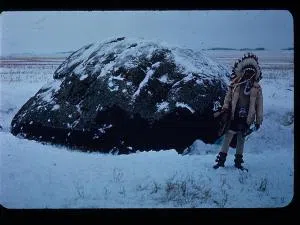
VIDEO: Sask. crew discovers sacred rock in Lake Diefenbaker
The search for what's left of a sacred boulder in Lake Diefenbaker was a success.
In July, we spoke to Saskatoon filmmaker Steven Thair about his documentary on the quest for — and story behind –the Buffalo Child Stone. Many aboriginal tribes considered the 400-tonne boulder to be a spiritual site, and protested its destruction in order to make room for the construction of Lake Diefenbaker. But in 1966, the federal government filled it with explosives and blew the rock apart before it was submerged underwater.
Nearly 50 years later on July 19, Thair and his team scoped out the coordinates of where the giant rock used to sit using side scan sonar. They detected a pile of fragments approximately 24 kilometres south of Elbow, near Douglas Provincial Park. Thair dived the 21-meter deep site on Aug. 13 and said he found the jagged remnants of Buffalo Child Stone merely minutes after reaching the bottom.
“What we found was a pile of rocks that's eight feet high and maybe 20 to 30 feet across, and there's nothing else like that around there, I mean it's unmistakable. There's no question that's what it is,” Thair said, adding he would still be interested in comparing it to pieces of the boulder that were salvaged before the lake was built.


